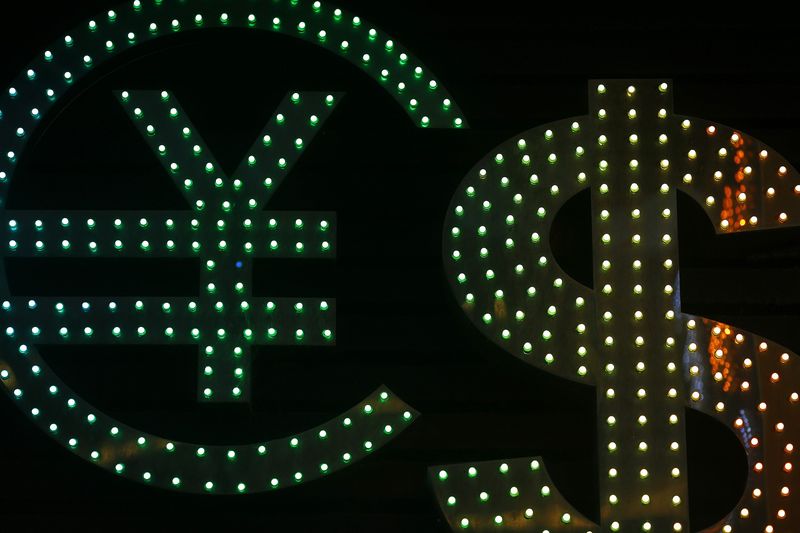* Graphic: World FX rates in 2019 http://tmsnrt.rs/2egbfVh
* Yield-curve inversion latest sign of economic trouble
* Yen, Swiss franc benefit from safe-haven flows
* Falling Treasury yields pressure dollar/yen (Adds Australian dollar, Sterling)
By Stanley White
TOKYO, Aug 15 (Reuters) - The yen held gains against major currencies on Thursday as sliding Treasury yields fanned fears of a severe global economic downturn and drove investors into safe-haven assets.
The latest turbulence in financial markets was triggered by an inversion in the U.S. Treasury yield curve US2US10=TWEB for the first time in 12 years, which helped lift gold prices and drove a massive sell-off in U.S. stocks and oil.
The inversion, where 2-year yields trade higher than 10-year yields, has historically preceded previous economic recessions.
Underscoring the worrying signs, 10-year Treasury yields slumped to the lowest in three years in Asian trade while 30-year Treasury yields broke below 2%, which took the entire yield curve below the floor for the Federal Reserve's policy rate.
Sentiment was already fragile after economic data from China and Germany revealed the extent of the damage the U.S.-Sino trade war is causing to two of the world's largest exporters.
In this dim economic environment, analysts expect safe-haven currencies, gold, bonds and other low-risk assets to continue to get a boost.
"When volatility rises, dollar/yen becomes strongly correlated with Treasury yields, so the currency pair has more room to fall," said Junichi Ishikawa, senior foreign exchange strategist at IG Securities in Tokyo.
"I expect other safe havens to rise. The mood is downbeat, because of the trade war and bad economic data."
The dollar was little changed at 105.90 yen JPY=EBS in Asian trading Thursday. On Wednesday, the yen rallied 0.8% versus the greenback, its biggest daily gain in two weeks.
The dollar index .DXY , which measures its value against a basket of six major currencies, stood at 97.914 after a 0.2% gain on Wednesday.
U.S. bonds remained well bid in Asian trade. The 10-year Treasury yields skidded to the lowest since September 2016 and 30-year Treasury yields extended their rapid decline, plunging to an all-time low of 1.9649%.
Spot gold XAU= , which is usually bought in times of economic uncertainty, rose 0.3% toward the highest in six years.
Against the dollar, the Swiss franc CHF=EBS last traded at 0.9735, holding on to a 0.3% gain posted on Wednesday.
Investors had plenty of reasons to stay away from riskier assets.
Ten weeks of increasingly violent clashes between police and protesters in Hong Kong have plunged the city into its worst crisis since it reverted to China from British rule in 1997, which could lead to more risk aversion in the currency market.
U.S. President Donald Trump on Wednesday tied a U.S. trade deal with China to a humane resolution to the protests, raising the stakes in a wide-ranging standoff with China over its trade and industrial policies. protests are planned on Friday and over the weekend in different areas of Hong Kong.
Sterling was little changed at $1.2069. The pound has been hemmed into a tight trading range recently due to lingering uncertainties about whether Britain will exit the European Union without transitional trading agreements.
Data on British retail sales are due later Thursday, which may provide further clues about how consumers are coping with heightened concerns about Brexit.
The Australian dollar AUD=D3 rose 0.5% to $0.6786 after data showed the Australian economy added a forecast-busting 41,100 new jobs in July.
However, reflecting the rising global economic risks, futures still imply an 84% chance of a quarter point rate cut to 0.75% in October, with November seen better than 100%.
RBA Deputy Governor Guy Debelle also highlighted the risks from the trade war in a speech earlier on Thursday, warning it could trigger a self-fulfilling global downturn.
